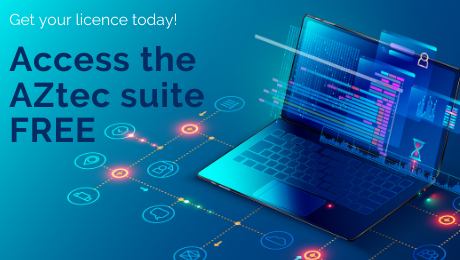Products
FIB-SEM
Nanomanipulators
OmniProbeOmniProbe CryoSoftware
AZtec3DAZtecFeatureAZtec LayerProbeTEM
Hardware
EDSUltim MaxXplore for TEMImaging
TEM CamerasSoftware
AZtecTEM
30th December 2020 | Author: Fiona Macrae
It is normal at the start of a new year to reflect on the year that has just passed, and it is fair to say there hasn’t been much that was normal about it. While some will have been affected more than others, there can be few of us who didn’t see significant changes in our working and family lives. That said, with the technology available, it is remarkable how much we have been able to continue to achieve remotely, even under the limitation we have all been facing.
At Oxford Instruments, with time, we have been learning and developing techniques to get the best out of our technology from distance. As we have gone through the year, we have been sharing that knowledge to help everyone take advantage.
In April 2020, we released AZtecTimed. AZtecTimed was a free software that we made available to allow anyone in academia or industry to continue with the research, product development, maintain productivity, etc. AZtecTimed allowed anyone with existing data from an AZtec project to continue processing that data without the need to access their laboratory systems. It provided full AZtec functionality, including premium packages, such as AZtecCrystal, for the duration of the licence.
Originally released to support users until June 2020, the licence was extended to October 2021 to ensure that as we all continue to be restricted in other aspects of our work, we can at least continue to extract information from our existing datasets.
The popularity of AZtecTimed and the feedback we received indicated that access to a personal copy of AZtec was more than just the ability to open and view datasets away from the microscope.
That's why we have launched AZtecFlex, a 12-month personal subscription license for installation on your desktop or laptop, designed to let you use AZtec anywhere and without needing to access shared facilities.


To further support those working from home, in May, we launched the Oxford Instruments Virtual Hub to provide easy access to a wide variety of online resources, including new video content, our blog library, on-demand webinars and much more, all in one place. Through the year, we have continued to develop and load up content.
To accommodate different learning styles, as well as recognising that different circumstances can dictate how much time we want or are able to invest, we have worked to provide materials in a selection of formats.
There is content to view:
There is also a wide choice of subject matter for those who prefer to read:
We also have an image gallery displaying images captured and uploaded by users of our detectors which is well worth a look. It may inspire you to contribute a creation of your own.
Meeting, seminars and exhibitions are another means by which we have previous exchanged knowledge with community that have been very different this year. While some events, such a EMC, … were cancelled, other like M&M,… were held remotely. These kinds of events are a great opportunity for networking, learning and sharing. The experience was very different this year, with the remote nature bringing some benefits as well as disadvantages.
Because they frequently they involve significant travel, attending conferences can be an immersive experience, which can be both a pro and a con. Attending remotely makes it much more time efficient to attend only the talks that are of most interest. They are often recorded, so if not scheduled at a convenient time, you don’t have to miss it. The costs of travel and hotels are avoided, as is the jetlag.
Conferences are a great place to catch up with colleagues that you have not seen since the last event, and this is something we have all missed. Ordinarily, there are also lots of opportunities to catch up with collaborators and peers, as well as meet new people. Engaging in the informal chats that can prompt ideas and new, exciting avenues of research which is very hard to recreate in the online platforms.
It seems likely that remote working is going to be a permanent part of life, to some degree. We will never be quite so tied to the office or laboratory as we were in the past.
As we progress through 2021, we will continue to support people perform micro- and nanoscale analysis of materials remotely. We do still hope that there will be the opportunity to meet with friends, peers and collaborators in person in the not-too-distant future, however.
We send out monthly newsletters keeping you up to date with our latest developments such as webinars, new application notes and product updates.